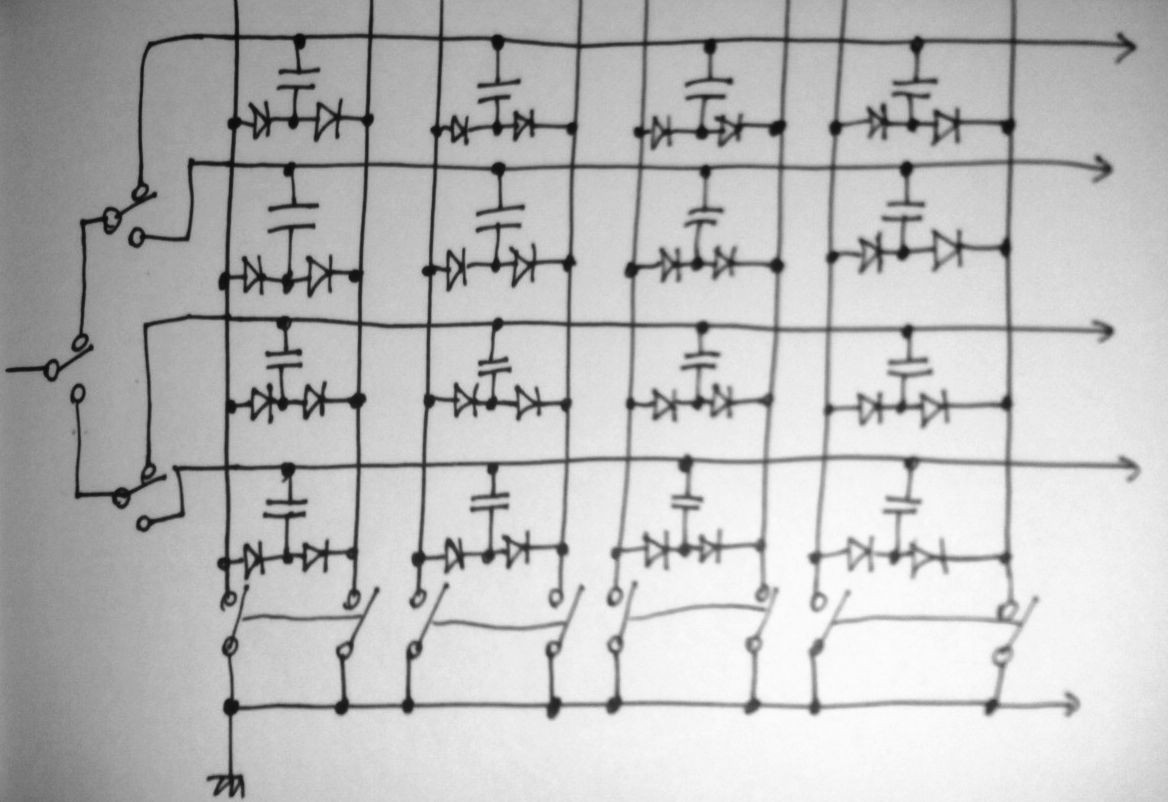In the comments of #AMBAP: A Modest Bitslice Architecture Proposal, @roelh has shown my errors with the (naive) capacitor array. Since this system is not possible, I am forced to use a couple of diodes for each capacitor. Fortunately, I had ordered a large batch for the instruction ROM...
The system I intend to use looks like this :

(sorry for the lousy picture, I'll take time to make a better one. Later.)
This is different from the system used by TIM-8 but "inspired" by a paper from the early 60s that was pointed to me in some comments.
TIM-8 differs by selecting one leg or another, for writing or reading, while I connect both to 0V, both for writing and reading. That's the "pinching" method.
I'm pretty sure there is no loop now, since it was developped and tested long ago (according to the paper relating Bell Labs' work). But can somebody prove me wrong ?
 Yann Guidon / YGDES
Yann Guidon / YGDES
Discussions
Become a Hackaday.io Member
Create an account to leave a comment. Already have an account? Log In.
Yes, the diodes effectively break up the loops, because you always encounter at least one reversed-pair of diodes around any loop.
Can you make construction easier by making the 2 diodes into a 3-terminal component (connecting the common lead in a single hole)? Maybe there are other tricks to avoid the tedium of soldering so many parts in a conventional way?
Are you sure? yes | no
I have a reel of dual schottky in SOT23 but not enough to make enough DRAM. And it's probably considered "too modern" for the standards of this project. So I just ordered more reels of lead-less diodes. You can't beat this: http://www.ebay.com/itm/361426480196
Assembly will probably require the fabrication of a custom comb to keep the damn diodes in place while I solder one end.
It wil soon be time to build a prototype...
Still, I have not yet figured how the TIM-8's memory works. I'd like to see chronograms or something like that...
Are you sure? yes | no
With prices like that, maybe you should make your computer only using diodes :-)
You could skillet-reflow the diodes to the board in one pass, then solder the through-hole caps by hand. It would probably be faster than hand-soldering the diodes. I've started applying solder paste with a small syringe, and it's very fast, with no need for a stencil. Or, maybe you even have a reflow oven?
Are you sure? yes | no
No reflow oven yet...
My idea is to solder two SMD diodes against each other, on one pad close to the capacitor pin, to put them in place, with the help of the comb. I place the comb at the right place (using the holes of the capacitors' pins) then put the diodes, two per notch, then apply a solder joint at the common node. The diodes stay in place while I solder the other joints. Then the capacitors.
Are you sure? yes | no